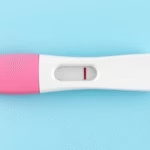Understanding Implantation Bleeding with Clots
Implantation bleeding refers to light spotting or bleeding that some women may experience when a fertilized egg attaches itself to the lining of the uterus. This event typically occurs around the time that a woman would expect her period, which can make it challenging to identify. Implantation bleeding may sometimes include small clots or tissue, which can raise questions and concerns. While many women may see implantation bleeding as a sign of pregnancy, not everyone experiences it.
The presence of clots during implantation bleeding can be alarming, but it is essential to understand that this can be a normal part of the process. Clots are often small and dark in color, distinct from the bright red of menstrual bleeding. The timing, color, and volume of bleeding can vary significantly among women. Understanding these nuances can help in recognizing whether the bleeding is related to implantation or if there may be underlying issues at hand.
By exploring the nature of implantation bleeding and its variations, we can help demystify this phenomenon and empower women with knowledge about their bodies.
What Causes Implantation Bleeding?
Implantation bleeding occurs when a fertilized egg burrows into the endometrial lining of the uterus. This process can trigger light bleeding or spotting as tiny blood vessels may be damaged during attachment.
The reason for the clots sometimes associated with this event may arise from two main factors. Firstly, hormonal changes following conception can affect the state of the endometrium, potentially leading to small clots. Secondly, the implantation process itself may cause small fragments of tissue or old blood to mix with new blood, resulting in dark clotted blood.
Understanding the connection between these biological processes can help in addressing concerns regarding implantation bleeding and clots.
It is crucial to consult with a healthcare provider if bleeding is heavy or accompanied by other symptoms like severe pain, fever, or unusual discharge that may suggest complications.
Distinguishing Implantation Bleeding from Menstrual Bleeding
The distinction between implantation bleeding and menstrual bleeding is vital for many women trying to conceive. While both can present as spotting, there are several characteristics that can help in differentiation.
Implantation bleeding is usually:
In contrast, menstrual bleeding generally:
By recognizing these indicators, women can better interpret the signs their bodies present around the time of their expected menstruation.
How to Handle Implantation Bleeding with Clots
Experiencing implantation bleeding with clots can understandably cause anxiety in many women. Here are some steps to follow when faced with this situation:
- Observe the bleeding: Keep track of the color, volume, and duration.
- Stay calm: Remember that light spotting can be a normal event.
- Use a diary: Documenting symptoms can help in communicating with your healthcare provider.
- Consult a professional: If there are any concerns regarding the nature of the bleeding, do not hesitate to reach out to your healthcare provider.
These practices can help ensure that a woman remains informed and prepared while navigating her reproductive health.
Signs to Watch For: When to Seek Help
While implantation bleeding is typically harmless, there are instances where medical attention is necessary. Watch for the following signs:
If any of these symptoms occur alongside implantation bleeding, it is crucial to seek medical support promptly. Early intervention can be key in addressing any potential complications.
Common Myths Surrounding Implantation Bleeding
Numerous myths exist surrounding implantation bleeding, contributing to confusion and anxiety among women. Here are some common misconceptions:
Understanding the truth behind these myths allows women to make informed decisions regarding their reproductive health and manage any anxiety associated with potential pregnancy signs.
Pregnancy Tests and Implantation Bleeding
Women may wonder when is the right time to take a pregnancy test after experiencing implantation bleeding. Generally, it is advisable to wait a few days after the bleeding has stopped for the most accurate results.
Home pregnancy tests measure levels of human chorionic gonadotropin (hCG) – a hormone produced after implantation. Testing too early may result in a false negative.
It’s best to follow the instructions on the test and consider a follow-up with a healthcare provider if results are unclear or symptoms persist.
Final Thoughts
Implantation bleeding with clots is a phenomenon that many women encounter during the early stages of pregnancy, but it is often misunderstood. Recognizing what implantation bleeding is, how to distinguish it from menstrual bleeding, and understanding when to seek help are vital components of women’s health education.
It is equally essential to be aware of the common myths and how to approach pregnancy testing following bleeding events. By arming oneself with information, women can better navigate their reproductive health journey.
In conclusion, remembering that every woman’s experience is unique is paramount. Observing symptoms and tracking experiences can assist in understanding one’s body and recognizing significant patterns. Always remember that consulting a healthcare provider remains an important step in addressing any health concerns, especially when changes arise.
Frequently Asked Questions
Here are five common questions related to implantation bleeding with clots:
- Is implantation bleeding always a sign of pregnancy?
Not necessarily. While implantation bleeding can indicate pregnancy, not all women experience it. Always check with a healthcare provider to rule out other causes of vaginal bleeding.
- What does implantation bleeding with clots look like?
It usually appears brown or light pink with small, dark clots. This is different from the bright red color of menstrual blood.
- How long does implantation bleeding last?
Implantation bleeding typically lasts from a few hours up to three days and is lighter than regular menstrual bleeding.
- When should I take a pregnancy test after spotting?
Waiting at least a few days after the bleeding has stopped is ideal, as this allows hCG levels to rise for accurate detection.
- Can implantation bleeding be heavy?
Implantation bleeding is usually light. If it becomes heavy or is accompanied by severe symptoms, seek medical attention.
Further Reading
What Type of Psychotherapy Is Best for Anxiety?







